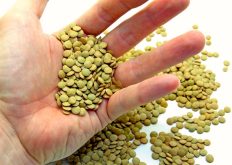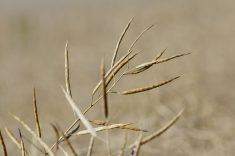CNS Canada –– Lower pricing and a softer supply/demand ratio has fababeans trailing some of their more high-profile pulse cousins when it comes to grower intentions across the Canadian Prairies this year.
“The marketplace is really being driven by lentils and peas. The indication for many growers is to put their acres into those type of crops; fababeans are taking a bit of a back seat,” said Leanne Fischbuch, executive director for Alberta Pulse Growers.
The situation is similar in Saskatchewan, the other main growing province for the crop. “We expect the growth we’ve seen in fababean acres in recent years to be muted a bit,” said Carl Potts, executive director for Saskatchewan Pulse Growers.
Read Also

India slaps 30 per cent import duty on yellow peas
India has imposed a 30 per cent duty on yellow pea imports with a bill of lading date on or after Nov. 1, 2025.
Some estimates for Canadian acres are around 130,000 to 135,000, he said.
Fischbuch said Alberta won’t likely top the roughly 100,000 acres it seeded last year. Instead, 90,000 to 95,000 is a more likely target.
“Prices have a base of $5-$6 a bushel, (which is) down a touch from last year,” she explained.
Most of the crop will be headed for Egypt, Fischbuch and Potts added, but the country’s not in a deficit situation for pulse supplies like India.
“Egypt is the big market for fabas and we’re not in as tight a supply/demand balance globally as we are on peas and lentils,” said Potts.
One advantage fababeans have over peas and lentils, though, is their ability to withstand certain types of diseases.
“Fababeans and chickpeas have been found to be a little more resistant to some of the root disease growers have been facing,” said Potts.
Fischbuch said fababeans feature a lot of protein, which is desirable to both humans and animals.
“If you make a human-quality fababean product, chances are your product is being exported to Egypt. If you’re not hitting a human grade very often you’re moving into an animal feed product,” she explained.
From talking with some of her group’s members, Fischbuch said many fababeans are in the ground already.
Over in Saskatchewan, Potts said most growers are waiting for warmer temperatures but a few beans are in the ground.
— Dave Sims writes for Commodity News Service Canada, a Winnipeg company specializing in grain and commodity market reporting.












